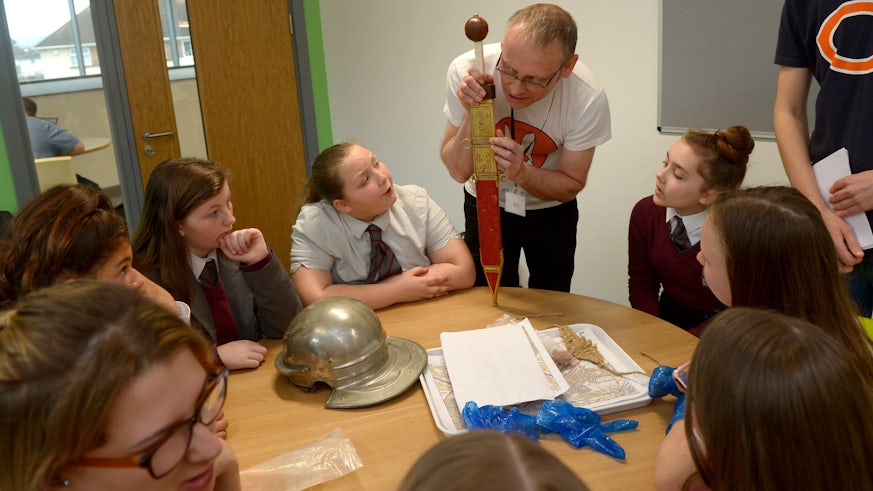Science opportunities give young people the chance to explore their heritage following funding success
10 December 2019

Hundreds of young people from an area facing social and economic challenges are to embark on a journey of scientific discovery into the past.
The Curiosity Club, a new initiative from the Caerau And Ely Rediscovering (CAER) Heritage Project, has been made possible thanks to £120,000 funding from Children in Need. More than 300 youngsters aged 10 to 18 will be given the chance to participate in weekly science-based activities that will shine a light on the place where they live.
The CAER Project is a collaborative project between community development organisation ACE - Action in Caerau and Ely, Cardiff University, and local schools and residents. The project is based around one of Cardiff’s most important, but little-known, archaeological sites, Caerau Iron Age hillfort.
Starting from January, Curiosity Club will hold two regular extra-curricular activities a week at Cardiff West Community High School. Later in the year, sessions will move to the Hidden Hillfort Heritage Centre, which is currently being built. Saturday sessions will be offered, as well as day-long events during the school holidays.
Two dedicated youth workers will deliver the project, which takes place over three years.
CAER Heritage Project Co-director Dr Oliver Davis, based in Cardiff University’s School of History, Archaeology and Religion, said: “We are hugely excited about the Curiosity Project, which will allow young people to explore what is meant by scientific research and give them real-life examples of the impact it can have."

We already know that young people here have great potential. We hope that allowing them to explore their local heritage through practical experiments will give them the confidence to pursue their interests and show them they can achieve anything they put their minds to.
In conjunction with Cardiff University academics and heritage experts, young people will cover several areas of research, which include:
What people made: Archaeological artefacts found at Caerau hillfort will be analysed. Young people will then get the chance to learn how materials deteriorate and how to conserve them. They will also be able to try techniques such as metal casting – but using a safer material – molten chocolate – to recreate artefacts.
What people ate: Bones and plant remains from the hillfort will be studied using stable isotope analysis – a technique which uncovers chemical compounds that give clues about the food people consumed. The same process will be used on young people’s hair. This anonymised data will create the first ever crowd sourced dietary map of the community, of people in the past and present.
Changing environments: Pollen from different periods will be analysed to help the group understand changing climates and the human impact on their local environment.

CAER Development Officer Kimberley Jones said: “The aim of the project is to bring young people together in a space where a love of learning is nurtured and they are encouraged to discuss, challenge and debate ideas.
This project builds on a range of humanities-based courses that have already been run in the community. It complements the work we are doing to embed the CAER Project within local schools’ curricula, through after-school, weekend and school holiday sessions.
Jamie Hayes, 17, long-standing CAER Heritage volunteer, sat on the interview panel for the youth support workers alongside ACE Director, John Hallett; ACE Trustee, Marian Dixey and CAER Development Officer, Kimberley Jones.
He said: “I am very excited about being involved in CAER Heritage. My mum told me about it many years ago and I've been involved since. It was a great experience being involved on the interview panel. I now know what to expect for my own future job interviews and I know that my contribution to the project really means something.
He added: “The Curiosity Club is going to be huge fun for all who get involved. I’m looking forward to taking part in the activities.”
Share this story
The School allows the brightest and best to explore and share their passion for past societies and religious beliefs, from prehistory to the present day.





